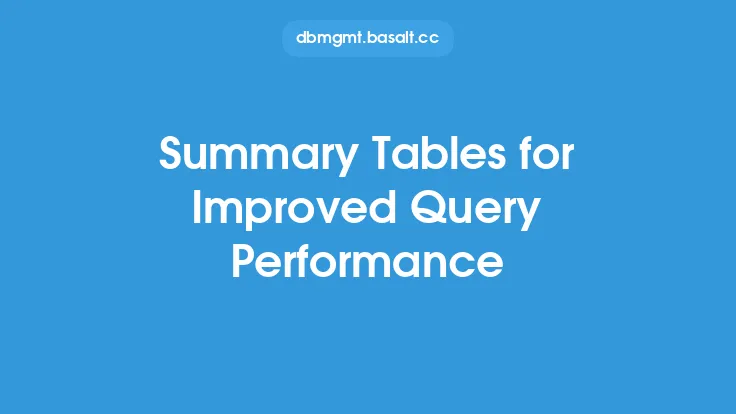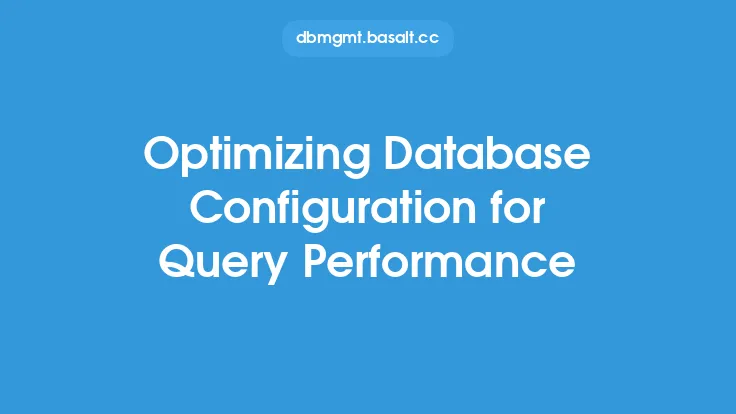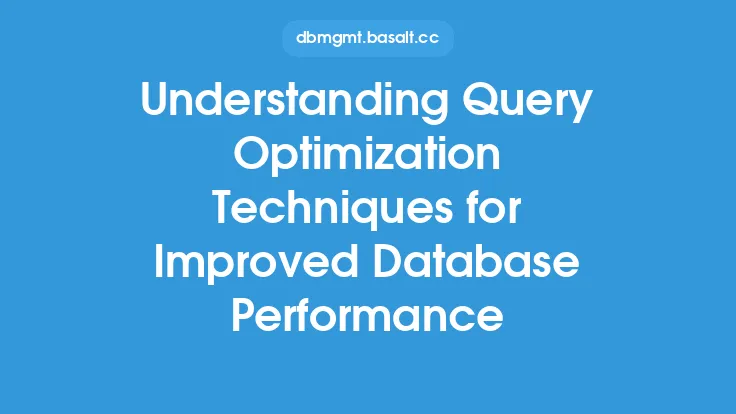Query rewriting is a crucial aspect of query optimization, as it enables database administrators to rephrase queries in a more efficient manner, leading to improved performance and reduced execution times. This technique involves analyzing the original query, identifying potential bottlenecks, and rewriting it to take advantage of the database's capabilities, indexing, and statistics. In this article, we will delve into the world of query rewriting, exploring its benefits, techniques, and best practices.
Introduction to Query Rewriting
Query rewriting is a query optimization technique that involves transforming a query into a semantically equivalent query that can be executed more efficiently. This process typically involves analyzing the query's syntax, semantics, and the database's schema, indexing, and statistics. By rewriting a query, database administrators can reduce the number of joins, subqueries, and full table scans, leading to improved performance and reduced resource utilization. Query rewriting can be performed manually or automatically, using specialized tools and software.
Benefits of Query Rewriting
The benefits of query rewriting are numerous and significant. Some of the most notable advantages include:
- Improved query performance: Query rewriting can significantly reduce query execution times, leading to improved responsiveness and user experience.
- Reduced resource utilization: By minimizing the number of joins, subqueries, and full table scans, query rewriting can reduce CPU, memory, and I/O usage, leading to improved system performance and scalability.
- Enhanced scalability: Query rewriting can help databases scale more efficiently, by reducing the load on the system and improving query performance.
- Better query optimization: Query rewriting can help database administrators identify and optimize queries that are not optimized by the database's query optimizer.
Query Rewriting Techniques
There are several query rewriting techniques that database administrators can use to improve query performance. Some of the most common techniques include:
- Rewriting subqueries as joins: Subqueries can be rewritten as joins, which can be more efficient, especially when the subquery is correlated.
- Eliminating unnecessary joins: Joins can be eliminated or reduced, by using indexes, rewriting subqueries, or using other query optimization techniques.
- Using index-based queries: Indexes can be used to improve query performance, by reducing the number of rows that need to be scanned.
- Rewriting queries to use efficient aggregation methods: Queries can be rewritten to use efficient aggregation methods, such as using indexes or rewriting subqueries.
Query Rewriting Best Practices
To get the most out of query rewriting, database administrators should follow best practices, such as:
- Analyzing query execution plans: Query execution plans can provide valuable insights into query performance and help identify potential bottlenecks.
- Using indexing and statistics: Indexing and statistics can help improve query performance, by reducing the number of rows that need to be scanned.
- Avoiding correlated subqueries: Correlated subqueries can be slow and should be avoided, by rewriting them as joins or using other query optimization techniques.
- Testing and validating rewritten queries: Rewritten queries should be tested and validated, to ensure that they produce the correct results and perform as expected.
Advanced Query Rewriting Techniques
In addition to the basic query rewriting techniques, there are several advanced techniques that database administrators can use to further improve query performance. Some of these techniques include:
- Using query rewriting tools: Query rewriting tools can help automate the query rewriting process, by analyzing queries and suggesting optimizations.
- Implementing materialized views: Materialized views can be used to pre-compute and store query results, reducing the load on the system and improving query performance.
- Using partitioning and parallel processing: Partitioning and parallel processing can be used to improve query performance, by dividing large datasets into smaller, more manageable pieces.
- Rewriting queries to use efficient sorting and grouping methods: Queries can be rewritten to use efficient sorting and grouping methods, such as using indexes or rewriting subqueries.
Common Query Rewriting Mistakes
While query rewriting can be a powerful technique for improving query performance, there are several common mistakes that database administrators should avoid. Some of these mistakes include:
- Over-optimizing queries: Over-optimizing queries can lead to complex and difficult-to-maintain queries, which can actually degrade performance.
- Ignoring query semantics: Query rewriting should preserve the original query's semantics, to ensure that the rewritten query produces the correct results.
- Failing to test and validate rewritten queries: Rewritten queries should be thoroughly tested and validated, to ensure that they produce the correct results and perform as expected.
- Not considering the database's capabilities and limitations: Query rewriting should take into account the database's capabilities and limitations, to ensure that the rewritten query can be executed efficiently.
Conclusion
Query rewriting is a powerful technique for improving query performance and reducing execution times. By analyzing queries, identifying potential bottlenecks, and rewriting them to take advantage of the database's capabilities, indexing, and statistics, database administrators can significantly improve query performance and reduce resource utilization. By following best practices, using advanced query rewriting techniques, and avoiding common mistakes, database administrators can get the most out of query rewriting and improve the overall performance and scalability of their databases.





